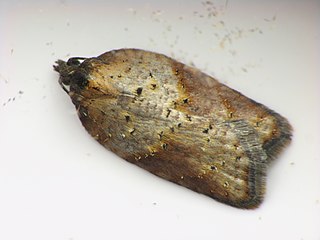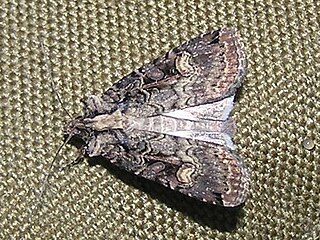
Kathmandu, officially Kathmandu Metropolitan City, is the capital and most populous city of Nepal with 845,767 inhabitants living in 105,649 households as of the 2021 Nepal census and 2.9 million people in its urban agglomeration. It is located in the Kathmandu Valley, a large valley in the high plateaus in central Nepal, at an altitude of 1,400 metres.

Nepal, officially the Federal Democratic Republic of Nepal, is a landlocked country in South Asia. It is mainly situated in the Himalayas, but also includes parts of the Indo-Gangetic Plain. It borders the Tibet Autonomous Region of China to the north, and India in the south, east, and west, while it is narrowly separated from Bangladesh by the Siliguri Corridor, and from Bhutan by the Indian state of Sikkim. Nepal has a diverse geography, including fertile plains, subalpine forested hills, and eight of the world's ten tallest mountains, including Mount Everest, the highest point on Earth. Kathmandu is the nation's capital and the largest city. Nepal is a multi-ethnic, multi-lingual, multi-religious and multi-cultural state, with Nepali as the official language.

Syntomoides imaon, the handmaiden moth, is a moth of subfamily Arctiinae, subtribe Ctenuchina. The systematics of the subfamily has been revised. It was described by Pieter Cramer in 1780. It is well distributed in Sikkim, Khasi hills and throughout India Tamil Nadu, Kerala, Sri Lanka, Myanmar, Bangladesh, Nepal, and Hong Kong, Viet Nam.

The Thyatirinae, or false owlet moths, are a subfamily of the moth family Drepanidae with about 200 species described. Until recently, most classifications treated this group as a separate family called Thyatiridae.

Hyles livornica, the striped hawk-moth, is a moth of the family Sphingidae.

Brahmaea wallichii, also known as the owl moth, is a moth from the family Brahmaeidae, the Brahmin moths, and one of its largest species. It is found in the north of India, Nepal, Bhutan, Myanmar, China, Taiwan, and Japan. The owl moth is nocturnal. The wingspan is about 90–160 millimetres.

Lithacodia is a genus of moths of the family Noctuidae.
Pseudodeltote is a genus of moths of the family Noctuidae.

Evecliptopera is a monotypic moth genus in the family Geometridae described by Inoue in 1982. Its only species, Evecliptopera decurrens, first described by Frederic Moore in 1888, is found in northern India, Nepal, south-western China, Japan, the Russian Far East and Taiwan.

The Tortricini are a tribe of tortrix moths.

Argina astrea, the crotalaria podborer, is a moth of the family Erebidae. The species was first described by Dru Drury in 1773. It is found in eastern Africa, southern Asia of India, Sri Lanka, and Indo-Australia, including the Pacific Islands and Australia.

Opigena polygona is a moth of the family Noctuidae. It is found from the Netherlands, Sweden and Finland, through central and south-eastern Europe to central Asia, northern Iran, the Caucasus, Transcaucasia, Armenia, Turkey, Irkutsk, western and central China, Tibet, Nepal and northern India.
Asiaephorus longicucullus is a moth of the family Pterophoridae. It is known from Nepal, Japan and Assam.
Choreutis aegyptiaca is a species of moth of the family Choreutidae. It is found in the India, Nepal, Israel, Saudi Arabia, the United Arab Emirates, Yemen, Egypt, La Réunion, Nepal, Oman, Uganda, Namibia and South Africa.

Pseudodeltote formosana is a species of moth of the family Noctuidae first described by George Hampson in 1910. It is found in Taiwan. The length of the forewings is 12–14 mm. The forewings are dark brown suffused with olive green and the hindwings are white, sparsely sprinkled with dark brown.
Pseudodeltote brunnea is a species of moth of the family Noctuidae first described by John Henry Leech in 1889. It is found on the Japanese islands of Hokkaido, Honshu, Shikoku and Kyushu.

Pseudodeltote coenia is a species of moth of the family Noctuidae first described by Charles Swinhoe in 1901. It is found in Taiwan.

Sameodes cancellalis is a species of moth of the family Crambidae described by Philipp Christoph Zeller in 1852. It has a wide distribution and has been recorded from India, Sri Lanka, Nepal, Myanmar, Thailand, Indochina, Taiwan, Japan, China, Indonesia, Malaysia, the Philippines, New Guinea, western and southern Africa, Fiji, the Cook Islands and Queensland, Australia.

The Natural History Museum of Nepal is located near the World Heritage Site of Swayambhunath. The museum was established in 1975. Since then the museum has collected 50,000 specimens of Nepal’s flora, fauna, and funga.

The Fauna of Nepal includes 3.96% of mammals, 3.72% of butterflies and 8.9% of birds among the total number of species found in the world. The protected species in Nepal include 26 mammals, nine birds and three reptiles. The endemic fauna are: Himalayan field mouse, Spiny babbler, Nepali kalij, 14 herpetofauna, and six types of fishes.
















